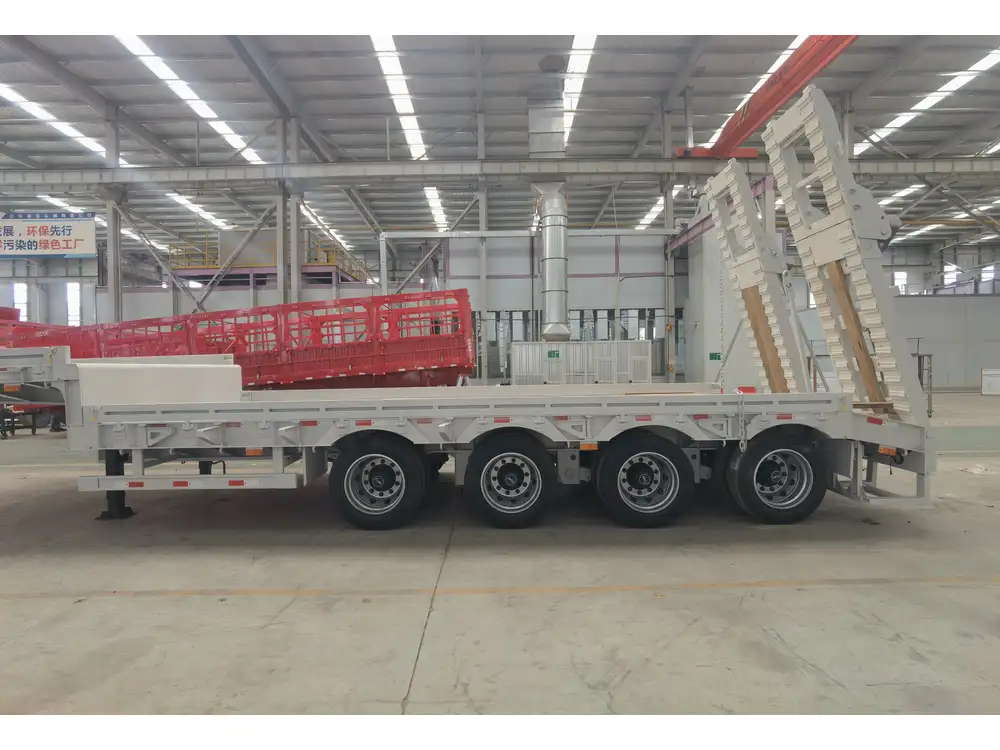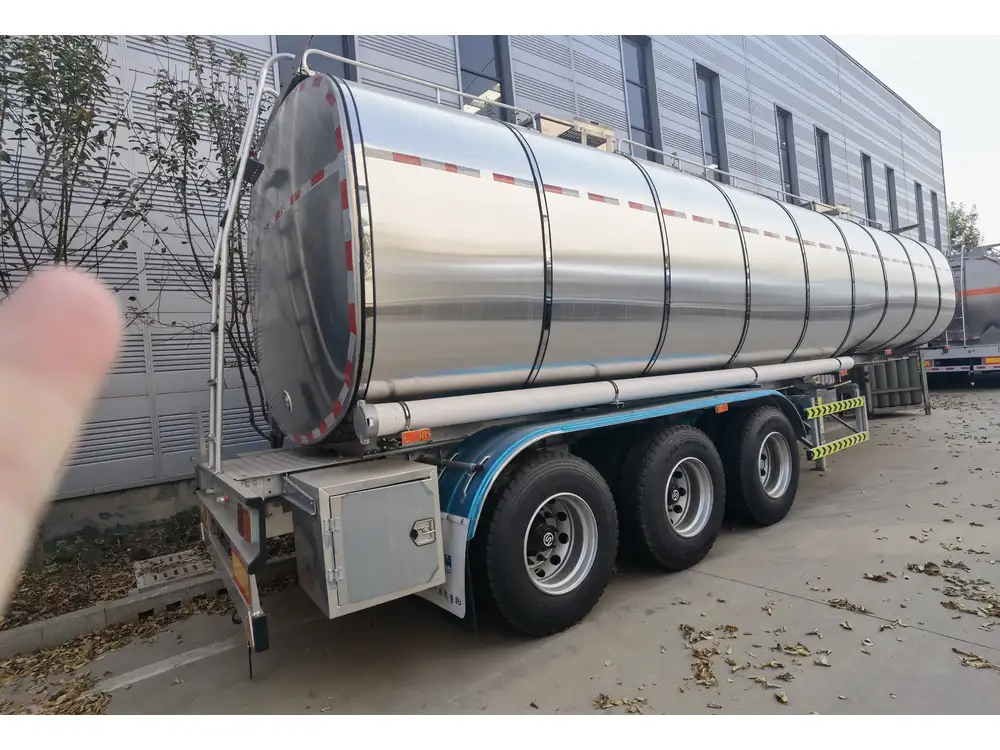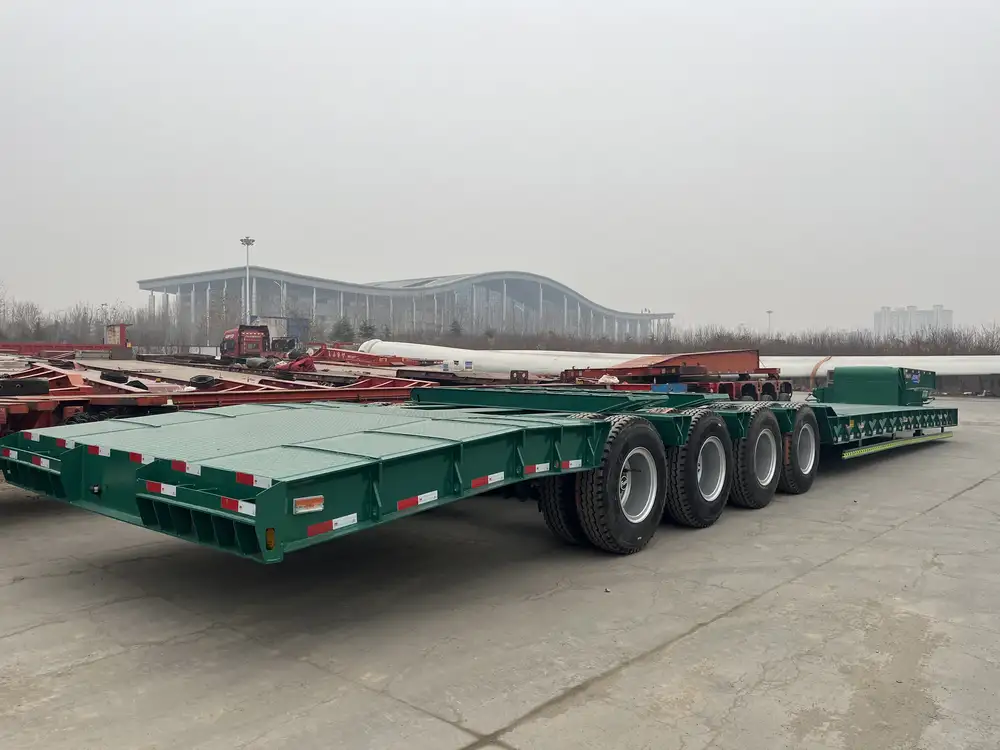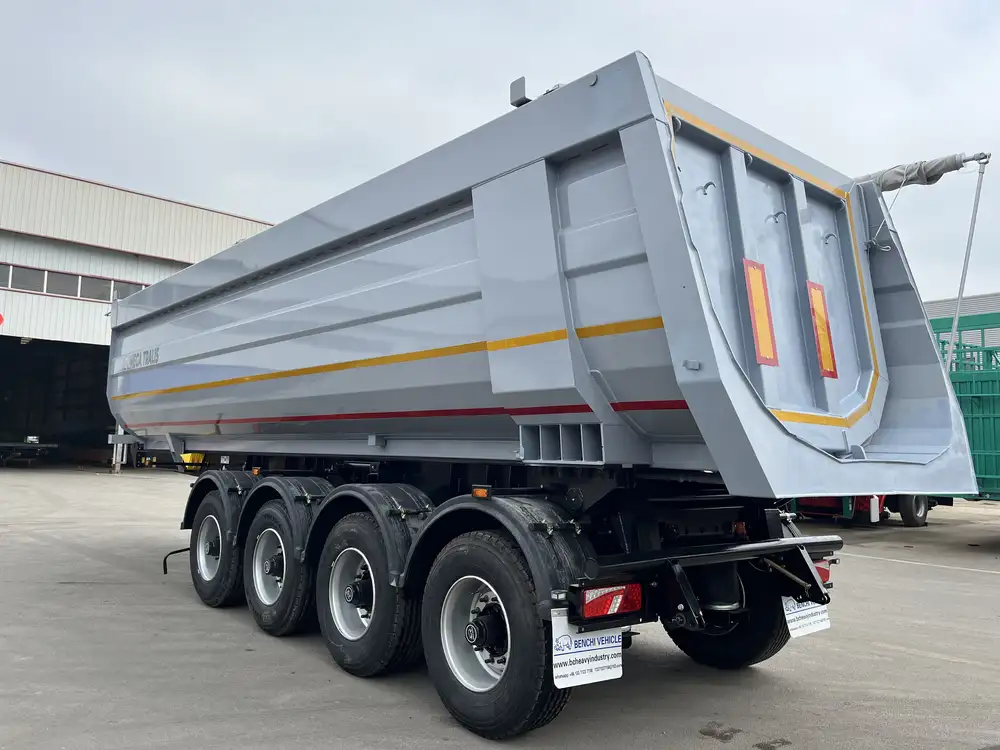Building a dump trailer hoist can seem daunting, but with careful planning, the right components, and a bit of mechanical know-how, the task becomes manageable. In this guide, we will walk you through the entire process, providing detailed steps, critical insights, and essential tips that are aimed not only at helping you build an efficient hoist but also ensuring you achieve a safe and reliable construction.
Understanding the Components of a Dump Trailer Hoist
Before diving into the construction process, it’s crucial to familiarize yourself with the essential components of a dump trailer hoist. A well-constructed hoist is the heart of the trailer, enabling the efficient unloading of materials. Below is an overview of the primary components involved.
| Component | Description |
|---|---|
| Hoist Cylinder | The hydraulic cylinder that provides the lifting force. |
| Hydraulic Pump | Converts manual or engine power to hydraulic energy. |
| Control Valve | Regulates the flow of hydraulic fluid to control the hoisting action. |
| Frame | Structural support for the hoist system and trailer bed. |
| Hydraulic Fluid | Essential for transferring energy within the hydraulic system. |
| Battery (if electric) | Powers the hydraulic pump for electric hoist systems. |
| Safety Relief Valve | Prevents overpressure in the hydraulic system. |
| Towing Frame | Connects the dump trailer to the towing vehicle. |
By comprehending each component’s function, we can proceed more effectively with the construction.
Step 1: Designing Your Dump Trailer Hoist

Define Your Requirements
First, determine the intended use of your dump trailer hoist. Assess the following:
- Weight Capacity: What is the maximum load?
- Height of Lift: How high do you need to raise the load?
- Type of Materials: Will it carry dirt, gravel, or debris?
Sketch a Design
Using your requirements, sketch a basic design of the dump trailer hoist. Consider:
- The orientation of the hoist cylinder
- The linkage between the cylinder and the trailer bed
- The support frame’s strength
Select Materials
After designing, choose materials that adequately support the expected load and weather conditions. Favor high-strength steel or aluminum for the frame construction.

Step 2: Gathering Tools and Supplies
The successful completion of your dump trailer hoist project relies on having the right tools and supplies. Below is a categorized list of required items:
Basic Tools
- Wrenches (various sizes)
- Ratchet and socket set
- Torque wrench
- Drill and drill bits
- Grinder
- Cutting torch or saw
Safety Equipment
- Safety goggles
- Gloves
- Hard hat
- Steel-toed boots

Supplies
- Hoist cylinder
- Hydraulic pump
- Hydraulic hoses
- Control valve
- Seals and fittings
- Mounting brackets
- Structural steel or aluminum for the hoist frame
Step 3: Constructing the Hoist Frame
Cutting and Welding the Frame
Measure and Cut Frame Elements:
- Use the measurements from your design to cut structural members accurately. Be mindful to cut all pieces to their required lengths to maintain structural integrity.
Assemble the Frame:
- Position the cut pieces as per your design. Prioritize stability and load paths. Use clamps to hold them in place.
Weld Together:
- Once secured, weld the pieces together carefully. Ensure that all joints are solid and that there are no gaps, which could weaken the frame under load.

Mounting the Hoist Cylinder
Position the Hoist Cylinder:
- The hydraulic cylinder should be mounted vertically or at a slight angle depending on your design. Its base should align with the trailer’s frame, providing maximum lifting capability.
Attach to the Frame:
- Use appropriate bolting techniques, ensuring that the cylinder is securely fixed to handle the lifting operation without dislocation.
Step 4: Installing the Hydraulic System
Setting Up the Hydraulic Pump
Choose Pump Location:
- Ideally, the pump should be mounted where it is easily accessible and away from debris. Ensure proper ventilation.
Connect Hydraulic Hoses:
- Use high-pressure hydraulic hoses. Connect one end to the pump output and the other to the control valve input.

Installing the Control Valve
Screw in the Control Valve:
- Link the control valve to the previously connected hydraulic hoses securely.
Connect Hydraulic Cylinder:
- Attach another hose from the control valve output to the hydraulic cylinder. This loop will allow fluid to circulate and enable lifting.
Implementing Safety Features
Install the Safety Relief Valve:
- Ensure the relief valve is fitted before the pump. This essential feature protects the system from dangerous pressures during operation.
Purge the System:
- Remove air from the hydraulic lines by cycling the pump before testing the system.
Step 5: Integration and Final Assembly

Connect the Towing Frame
Ensure a solid connection between the dump trailer and your towing vehicle. Use adjustable couplings to allow for flexibility.
Wiring (If Electric)
Battery Connection:
- For electric hoists, connect the hydraulic pump to the power source using appropriate gauge wiring. Ensure all connections are secure and weatherproof.
Switch Installation:
- Incorporate a switch for easy control access. Position it where the operator can safely reach it while working.
Final Check
Conduct a comprehensive inspection of all components, bolts, connections, and hydraulic fittings to ensure proper assembly and safety.

Step 6: Testing the Dump Trailer Hoist
Empty Load Test
Initial Testing:
- Perform an empty load test to check the lifting mechanism. Activate the pump and observe if the hoist operates smoothly and robustly.
Check for Leaks:
- Monitor all hydraulic connections for potential leaks.
Full Load Test
Adding Weight:
- Gradually add weight to the trailer, ensuring to remain below the specified maximum load capacity.
Observe Performance:
- Check that the hoist exceeds operational expectations and retains optimal functionality under load.

Step 7: Maintenance and Troubleshooting
Maintaining your dump trailer hoist ensures longevity and reliability. Here are a few maintenance tips:
Regular Inspections
- Check Hydraulic Fluid Levels: Regularly inspect and ensure the hydraulic fluid is at optimal levels for efficient operation.
- Inspect Hoses and Connections: Look for signs of wear, fraying, or leaks, replacing any faulty components promptly.
Problem Diagnosis
| Problem | Potential Cause | Solution |
|---|---|---|
| Hoist Won’t Raise | Insufficient hydraulic fluid or faulty pump. | Check fluid levels, inspect the pump for functionality. |
| Slow Operation | Air in the system or low pressure. | Purge air or check settings on the pump. |
| Uneven Lifting | Misalignment of the hoist cylinder. | Realign the cylinder and check the mounting. |

Conclusion
Constructing a dump trailer hoist involves detailed planning, precision, and a thorough understanding of hydraulic systems. By following these steps, you not only learn how to build a hoist but also gain insight into maintaining and troubleshooting it for long-term performance. Invest the time to heed safety standards, and enjoy the efficiency that a fully functional dump trailer hoist will provide in your hauling operations.



